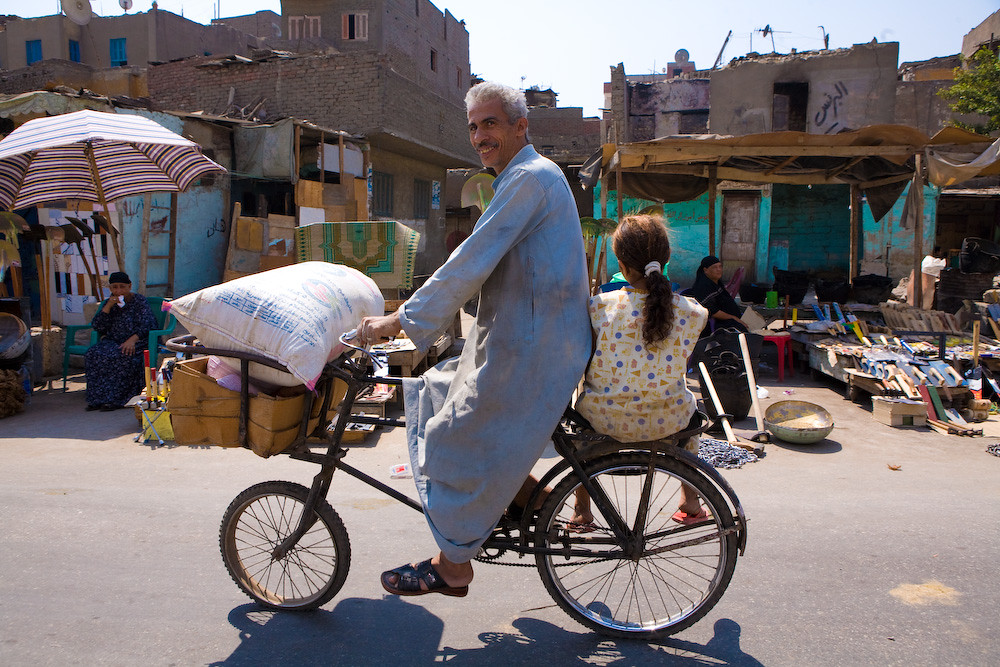Poverty Reduction in Egypt

As of 2019, Egypt is the most populous country in North Africa and the Middle East with a population of more than 99 million. For all intents and purposes, it would appear at first glance that Egypt should not have many challenges regarding poverty by virtue of it being a middle-income country. However, if one takes a closer look, it is obvious that the nation of Egypt has numerous development challenges that have plagued the country for a long while. Poverty in the country is significant, yet there are poverty reduction efforts in Egypt to combat it.
Poverty in Egypt
The poverty rate in Egypt has consistently been high and steadily rising, it has been a long-standing problem for the country. According to un.org, over the course of 2015 to 2018, income poverty saw an increase to 32.5% from 27.8%. In total, this time period saw more than 32 million people fall below the national income poverty line. From 1999 to 2018, there has been a steady increase in the income poverty rate consistently every year. Then, there is the issue of extreme poverty which has risen as well and in 2018 it went up to 6.2% which would mean that the people in this category live with food insecurity and suffer to meet even the most basic of needs.
To put things into perspective, this has been a long-standing problem going back decades for Egypt. In the last two decades, the poverty rate has stubbornly hovered around 20% or higher. The percentage of people who are ‘near poor’ is also high, estimated at 20% which when added up brings the percentage of total poor to 42.6%. Poverty is particularly prevalent in Egypt’s rural areas, with more than 75% of Egypt’s poor located there. This has made attempts at poverty reduction challenging.
However, one glimmer of hope comes from rural Upper Egypt. According to El Laithy, every region of Egypt from 2015 to 2018 saw an increase in the percentage of those living below the poverty line with the exception of rural Upper Egypt. The region saw a decrease of 4.8, from 56.7 to 51.9. While that region does have the highest percentage of poor Egyptians it still shows progress. Additionally, it is also home to 40% of Egypt’s poor population which means it is a key focus and priority for assistance programs in Egypt. This shows there is an opportunity to build upon that progress.
Poverty Reduction Strategies
According to sesric.org, there are four main pillars to the strategy of reducing poverty in Egypt:
- Economic Development: Increase current earnings
- Human Development: Increase future earnings
- Social Safety Nets: Protect vulnerable groups
- Provision of basic services
This list showcases in broad terms the general strategy for poverty reduction in Egypt. To get into specifics one of the ways in which to help those living in poverty in Egypt is through cash transfers. These cash transfers help the most vulnerable in society such as widows, orphans, the elderly or the disabled for example. Also, this strategy does not carry much cost since it would only constitute 0.1% of GDP and additionally, it only represents a small portion of total subsidies. In fact, Egypt recognizes the benefits of cash transfers and has actually expanded them to cover the employable poor through the New Social Pension Law.
Food Subsidies
Next, there are food subsidies, and they represent a huge part of Egypt’s social safety net. Egypt’s government gives out ration cards and has expanded the coverage of those cards in the wake of rising food prices and poor living standards. Over the time period between 2007 and 2010, there has been an increase in beneficiaries to 63 million from 38.5 million. These ration cards have proven to be a tremendous help to many and have helped numerous vulnerable households. In fact, between 2007 and 2008 they helped to lift 9% of Egyptians out of poverty.
The Social Fund for Development
Another way Egypt has worked to reduce poverty is through the Social Fund for Development (SFD). Its mandate is as follows:
- Reduce poverty by supporting community-level initiatives
- Increase employment opportunities
- Encourage small enterprise development
As recently as June 29, 2022, Egypt received a $500 million loan to Egypt to help bolster efforts and programs to provide vulnerable households access to bread, strengthen their resilience to food crises and implement additional reforms to both food and security policies. The World Bank’s Board of Executive Directors provided this loan. The loan was part of the Emergency Food Security and Resilience Support Project. In addition to the list above, the project will help with the procurement of imported wheat, reduce waste and losses in the wheat supply chain and strengthen Egypt for future crises all of which serve to help more than 31 million Egyptians who live below the poverty line.
Conclusion
So, in conclusion, Egypt has deep and long-standing problems dealing with poverty and its consistent increase over the course of decades, especially in the rural regions of the country. There are a number of strategies and efforts to combat the problem, and they are not perfect. For example, the food subsidy system, while lifting more than 9% of the population out of poverty, is costly, and there can be improvements particularly when it comes to system leakages. Also, the amount of benefit from cash transfers is low. However, these are steps and progress in the right direction towards poverty reduction in Egypt, and they show what is possible to further the goal of reducing poverty in Egypt. The World Bank’s loan is one way in which the world is lending its weight to Egypt’s efforts at poverty reduction.
– Gary Williams
Photo: Flickr
